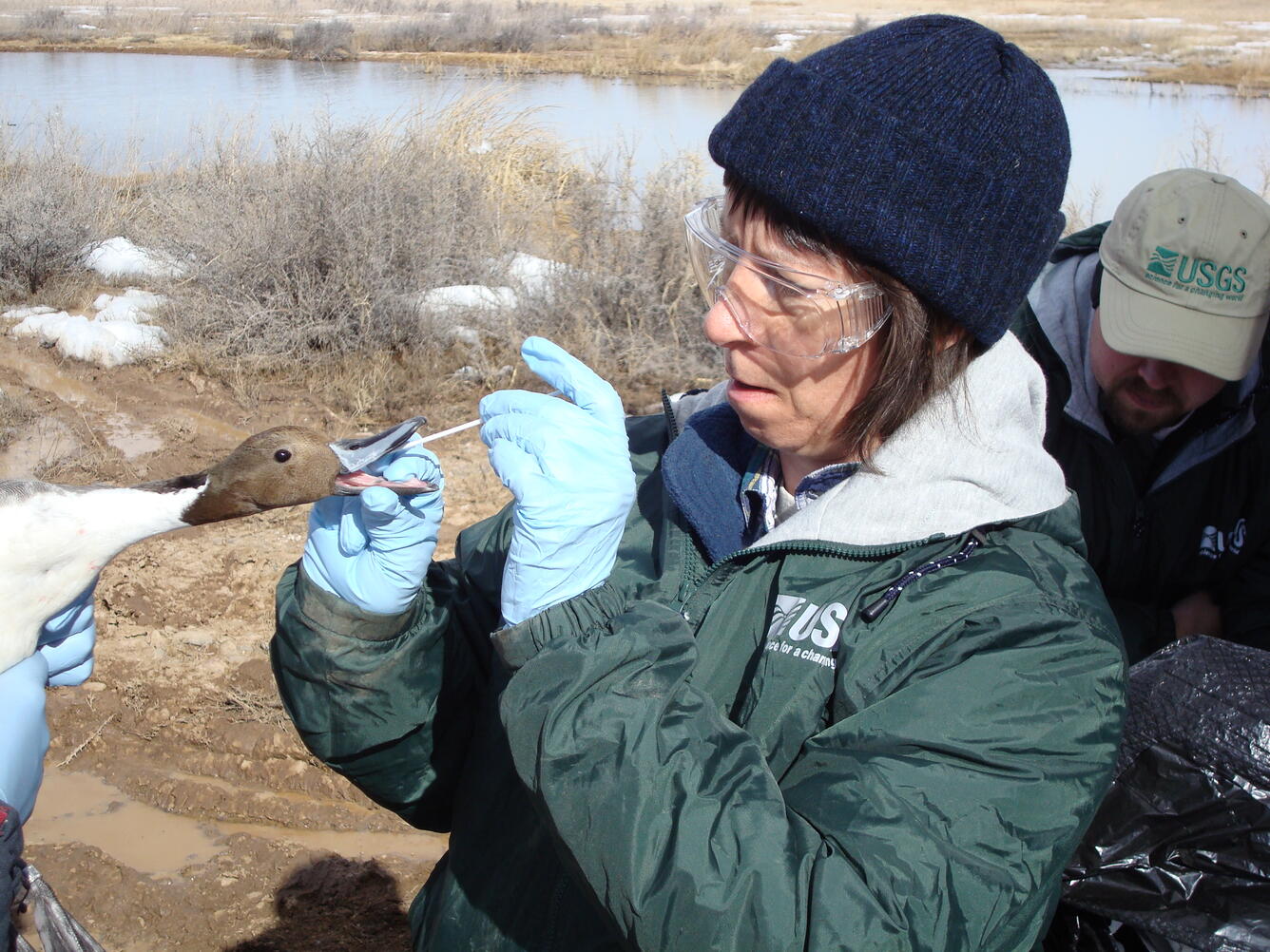New Strategic Plan for the USGS National Wildlife Health Center
The USGS National Wildlife Health Center has adopted a new strategic science plan to guide our efforts to advance wildlife health for the next five years.
The strategic plan includes three initiatives that will help us work collectively to realize our new mission: advancing wildlife health science for the benefit of animals, humans, and the environment. The plan is intended to be solutions focused and innovative to address complex problems impacting wildlife health. As we work toward implementing the strategic initiatives described in the plan, we look forward to working collaboratively with you, our partners, to advance wildlife health.
The complete strategic plan is available online, USGS National Wildlife Health Center Strategic Science Plan 2020-2025.
NWHC Mission
Advancing wildlife health science for the benefit of animals, humans, and the environment
NWHC Vision
Providing new solutions to promote wildlife health and ecosystem resilience
Strategic Initiatives
Initiative 1: Take a comprehensive approach to wildlife health to optimize outcomes for animals, humans, and the environment.
Wildlife, human, and domestic animal health are closely interrelated within the context of the health of the environment, and an approach to wildlife health that acknowledges and incorporates these broader components can provide wide-ranging benefits. The health of wildlife has direct impacts on humans, domestic animals, the environment, and local and global economies. As vulnerable populations that depend on functioning ecosystems, wildlife are in turn highly impacted by multiple anthropogenic pressures, such as alterations in land use or introduction of invasive species. Due to their close link with humans, domestic animals, and the environment, wildlife can serve as an indicator of the health of the broader biotic community. These interrelationships, as embodied by the One Health concept, must play a central role in the consideration of wildlife health to maximize the practical value of wildlife health science to society.
With this initiative, we will begin to orient towards a broader paradigm of wildlife health inclusive of multiple determinants within the larger context of functioning ecosystems and global health. We will do this through collaborative projects with partners in the natural resources, agriculture, public health, social, and environmental sectors and by collectively sharing information with stakeholders and the public regarding both the components of, and the importance of, wildlife health and resilience.
Initiative 2: Provide wildlife health intelligence for action
Wildlife disease remains a central component of wildlife health. An understanding of wildlife diseases, the factors that contribute to disease occurrence, and the impacts of disease on populations and ecosystems is crucial to assessing and promoting wildlife health. Managers and decision-makers must have current information about diseases on the landscape, disease trends, and potential impacts of diseases to wildlife, humans, domestic animals, and the environment to make scientifically-informed decisions. In collaboration with a consortium of partners, the National Wildlife Health Center will design and implement a scalable, national wildlife disease surveillance program to detect priority pathogens, toxins, and toxicants, facilitate early detection of novel pathogens, determine risk factors, and understand disease drivers and potential impacts of disease to wildlife health and resilience. This program will serve a national need for this information and will allow natural resource managers and policy-makers to make evidence-driven decisions supported by the most current scientific understanding of wildlife diseases and their impacts.
Initiative 3: Provide wildlife health tools and technology for action
The promotion of wildlife health is an aspect of natural resource management that is biologically, ecologically, and socio-politically complex. Historically, tools for the management of wildlife health have been primarily pathogen-focused and often used only after disease has manifested in a population. The National Wildlife Health Center will continue to play an important role in pathogen discovery, characterization, development of diagnostic tests and vaccines, and other applied management research to facilitate effective response to disease outbreaks. Additionally, NWHC will explore, develop, and implement new metrics and solutions to assist managers in addressing the wide range of factors (genetic, demographic, environmental, socio-political, etc.) impacting the health of free-ranging wildlife and ecosystems. The Center will also develop predictive modeling and forecasting tools to allow natural resource managers to make better decisions in the face of uncertainty. Our goal is to provide enhanced tools for managers to assist in decision-making that optimizes health outcomes.
Examples of Future Projects and Goals
- Continue feature enhancement of WHISPers data portal to collate and share wildlife health intelligence
- Refine current surveillance efforts by designing and implementing a scalable, national wildlife disease surveillance program to detect novel and priority pathogens, toxins, and toxicants, to determine the significance of novel or emerging diseases, and to understand disease drivers
- Develop risk assessments and forecasting tools for priority diseases and species
- Initiate proof-of-concept studies to define determinants of wildlife health and propose, apply, and validate metrics to assess wildlife health
- Development of field-deployable assays and vaccines for wildlife diseases
For more information, please contact LeAnn White (clwhite@usgs.gov).
Get Our News
These items are in the RSS feed format (Really Simple Syndication) based on categories such as topics, locations, and more. You can install and RSS reader browser extension, software, or use a third-party service to receive immediate news updates depending on the feed that you have added. If you click the feed links below, they may look strange because they are simply XML code. An RSS reader can easily read this code and push out a notification to you when something new is posted to our site.





